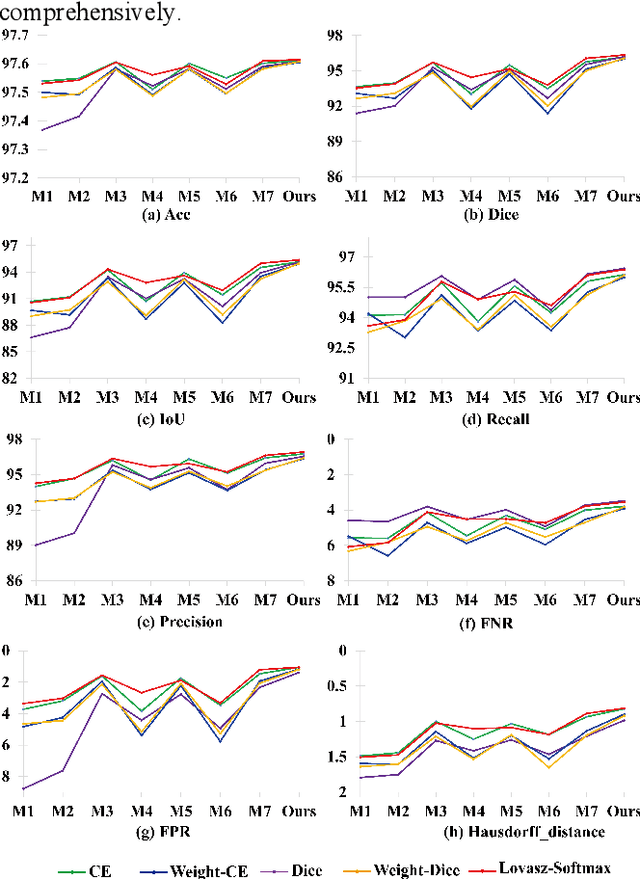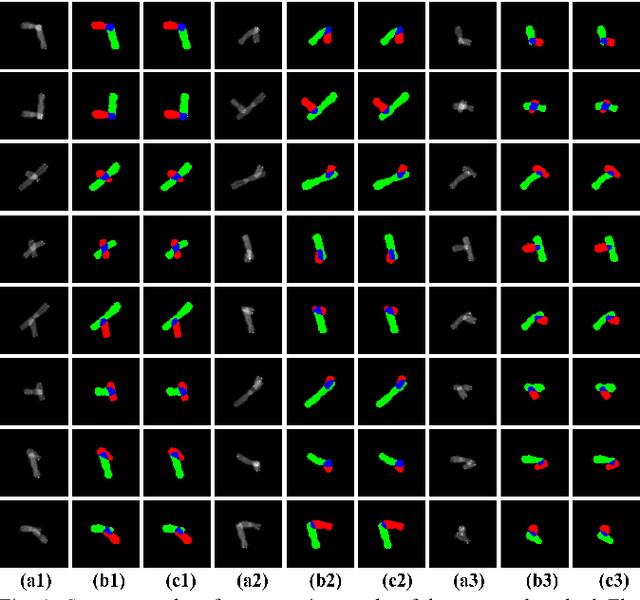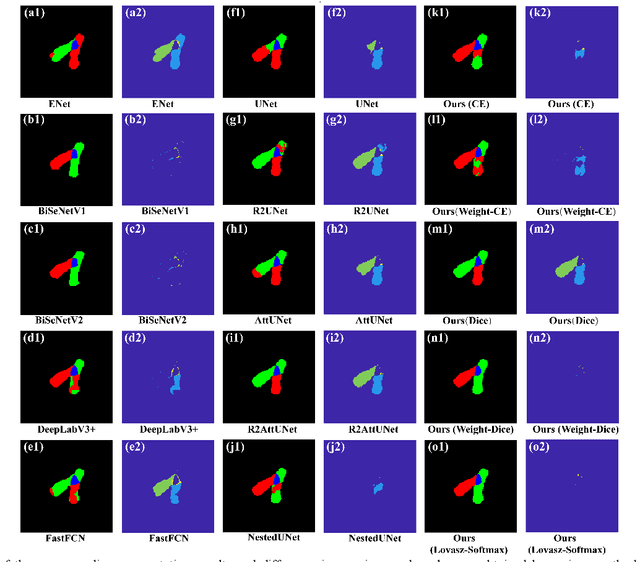Liye Mei
Adversarial Multiscale Feature Learning for Overlapping Chromosome Segmentation
Dec 22, 2020



Abstract:Chromosome karyotype analysis is of great clinical importance in the diagnosis and treatment of diseases, especially for genetic diseases. Since manual analysis is highly time and effort consuming, computer-assisted automatic chromosome karyotype analysis based on images is routinely used to improve the efficiency and accuracy of the analysis. Due to the strip shape of the chromosomes, they easily get overlapped with each other when imaged, significantly affecting the accuracy of the analysis afterward. Conventional overlapping chromosome segmentation methods are usually based on manually tagged features, hence, the performance of which is easily affected by the quality, such as resolution and brightness, of the images. To address the problem, in this paper, we present an adversarial multiscale feature learning framework to improve the accuracy and adaptability of overlapping chromosome segmentation. Specifically, we first adopt the nested U-shape network with dense skip connections as the generator to explore the optimal representation of the chromosome images by exploiting multiscale features. Then we use the conditional generative adversarial network (cGAN) to generate images similar to the original ones, the training stability of which is enhanced by applying the least-square GAN objective. Finally, we employ Lovasz-Softmax to help the model converge in a continuous optimization setting. Comparing with the established algorithms, the performance of our framework is proven superior by using public datasets in eight evaluation criteria, showing its great potential in overlapping chromosome segmentation
Visual Perception Model for Rapid and Adaptive Low-light Image Enhancement
May 15, 2020



Abstract:Low-light image enhancement is a promising solution to tackle the problem of insufficient sensitivity of human vision system (HVS) to perceive information in low light environments. Previous Retinex-based works always accomplish enhancement task by estimating light intensity. Unfortunately, single light intensity modelling is hard to accurately simulate visual perception information, leading to the problems of imbalanced visual photosensitivity and weak adaptivity. To solve these problems, we explore the precise relationship between light source and visual perception and then propose the visual perception (VP) model to acquire a precise mathematical description of visual perception. The core of VP model is to decompose the light source into light intensity and light spatial distribution to describe the perception process of HVS, offering refinement estimation of illumination and reflectance. To reduce complexity of the estimation process, we introduce the rapid and adaptive $\mathbf{\beta}$ and $\mathbf{\gamma}$ functions to build an illumination and reflectance estimation scheme. Finally, we present a optimal determination strategy, consisting of a \emph{cycle operation} and a \emph{comparator}. Specifically, the \emph{comparator} is responsible for determining the optimal enhancement results from multiple enhanced results through implementing the \emph{cycle operation}. By coordinating the proposed VP model, illumination and reflectance estimation scheme, and the optimal determination strategy, we propose a rapid and adaptive framework for low-light image enhancement. Extensive experiment results demenstrate that the proposed method achieves better performance in terms of visual comparison, quantitative assessment, and computational efficiency, compared with the currently state-of-the-arts.
 Add to Chrome
Add to Chrome Add to Firefox
Add to Firefox Add to Edge
Add to Edge